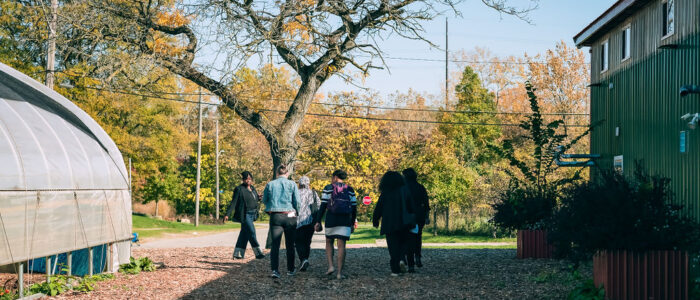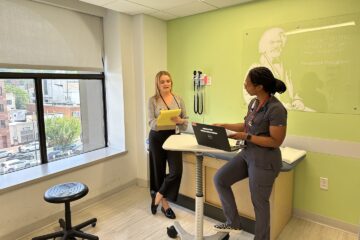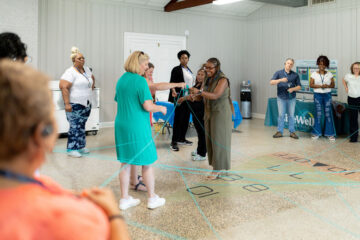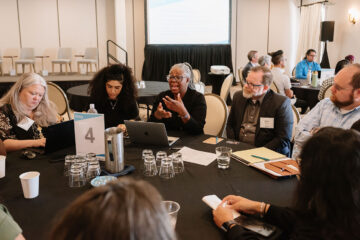Throughout this past summer and fall, The BUILD Health Challenge® (BUILD) team has been honored to conduct site visits with the fourth cohort of BUILD awardees. These visits bring together awardees, community leaders, BUILD staff, funders, and other key partners to explore progress, reflect on challenges, and deepen relationships.
These visits spanned rural and urban settings and reached from the East Coast to the West, with each team bringing its own distinct energy and perspective to the work. No matter the location, we were continually inspired by the unwavering passion and deep commitment each individual demonstrated for their community.
With this opportunity to witness the powerful work happening on the ground and in action, we saw how awardees are advancing their goals while navigating unique local dynamics. Below, we share more about some of our key takeaways:
The Critical Roles of Community-Based Organizations and Local Champions
Across all collaboratives, community-based organizations (CBOs) emerged as essential drivers of change. Their leadership, relationships, deep understanding of local issues, and ability to mobilize resources position them as indispensable anchors within their collaboratives. CBOs bridge the gap between community needs and larger systems of change, ensuring that efforts remain grounded in real-world contexts and priorities.
Equally impactful, yet sometimes less visible to us, are the individual champions working behind the scenes across sectors. These champions range from residents with powerful voices and deep local connections to hospital administrators or public health officials with a vision and passion for systemic change. During our visits, we had the privilege of meeting these individuals who, often outside of grantmaking structures , play critical roles in advancing BUILD projects and systemic change initiatives. Their work underscores a reality that cannot always be captured through reporting or formal meetings: meaningful progress requires immense effort in community trust, mobilization, and advocacy. These champions exemplify the bold, upstream, integrated, local, and data-driven (BUILD) approaches that make this work transformative. 
The Power of Storytelling
In addition to better understanding coalition members and their roles, site visits allowed for individual voices to shine in ways that can be challenging to hear in more structured or virtual settings. Many powerful advocates and storytellers emerged, highlighting opportunities to amplify local voices.
Residents were the most prominent example of this. From congregation members to tenants, individuals shared personal stories about what brought them to this work, their moments of triumph, and why they were committed to improving community conditions for their families and neighbors. After one particularly compelling story, a partner in the room said: “It is impossible to listen to a story like that and not want to change the situations that create them.”
In addition to residents, community health workers (CHWs) remain powerful links between residents and health institutions, experienced in advocating for community members. Emerging young leaders in charge of innovative programs also stood out, with deep roots in their community, lived experience, and a strong commitment to improving their neighborhoods and future opportunities.
Navigating Immediate Needs Versus Long-Term Upstream Solutions
Every site grappled with the tension between addressing immediate survival needs and pursuing long-term upstream solutions. Communities often are faced with the reality of providing immediate resources to those struggling with systemic inequities or natural disasters, while also working to address the root causes with upstream strategies.
For some sites, this tension was especially evident. Whether responding to natural disasters requiring immediate relief, addressing economic challenges that demand urgent assistance, or confronting harmful housing practices, the need for individual-level support underscored the critical importance of balancing short-term solutions with long-term systemic efforts. Tangibly, we visited community centers, food pantries, and housing developments that play critical roles, while also having conversations about policy change, finding solutions for food deserts and unaffordable housing, and creating platforms for advocacy and data sharing. These moments highlight how deeply intertwined immediate needs and upstream strategies are in the pursuit of lasting change. Although residents and partners were often facing personal challenges, they continue to show up as advocates, contributing to this work in every way they can.
We are grateful to our awardees for welcoming us to their neighborhoods and allowing us to gain a small window into what their work looks like in person over the last six months. While site visits involve travel, scheduling, hosting obligations, and more, they offer invaluable insights into how community collaboratives work that could only be gained by being immersed with the partners where they live, work, and play.
Seeing the people at the center of every collaborative reaffirmed that strong relationships—both personal and professional—are essential to maintaining momentum and sustaining the momentum for change. These visits revealed the authenticity, passion, and community-rootedness that drive these movements forward. We are excited to continue this journey alongside our awardees, learning from them and supporting the movement towards health equity along the way.







